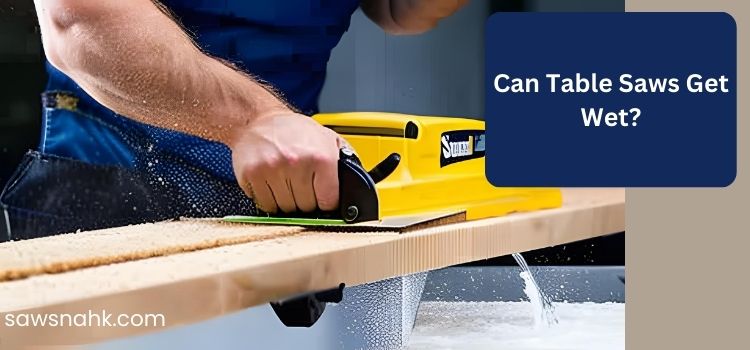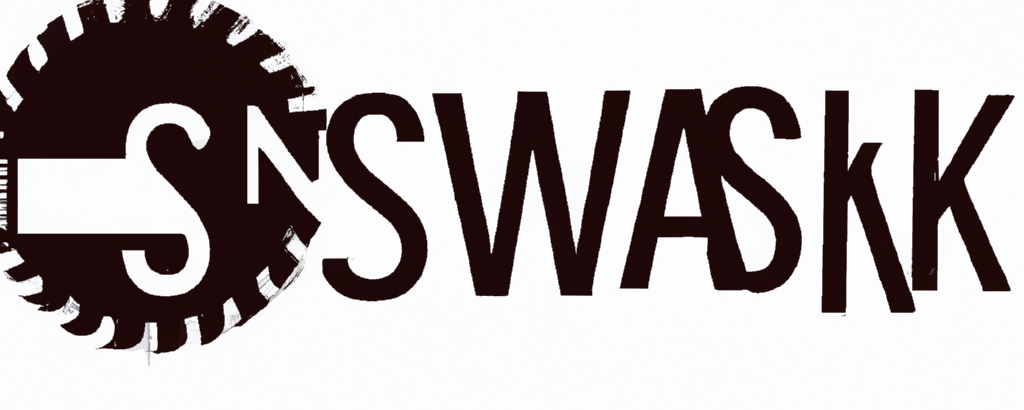Can Table Saws Get Wet? Facts Explained

The table saw is a must-have tool for both woodworkers and professionals. These powerful machines allow users to make intricate designs and create beautiful woodwork.
If you are using a table saw, you may need to face a different situation, but can the table saw get wet? No, table saws should not get wet. Water and electricity do not mix; using a wet table saw can be dangerous.
Water is a factor that requires a lot of attention. In this blog, we will discuss the dangers of wet table saws and what safety measures to take to ensure your table saw is dry and safe.
Wet Table Saws Can Be Dangerous
Water and electricity don’t mix, as the old saying goes. The same applies to table saws. Table saws can have disastrous results if they get wet. Water and electricity combined can lead to a short circuit, sparks, or in worst-case scenarios, a fire.
The water can also damage the electrical components of the saw, making it unusable and potentially dangerous when used afterwards.
Preventative measures For Table Saw:
You need to follow the following measures for your table saw:
Keep your table saw in a dry place:
The best way to avoid water damage is to keep your table saw dry. Consider using moisture-absorbent materials or dehumidifiers if your workshop or storage space is humid. Cover your table saw in tarps or other water-resistant materials for extra protection.
Protect Your Table Saw Outside:
If you need to use your table saw outdoors, ensure it is protected from moisture or rain. Use a waterproof cover or tarp to protect the table saw from the weather. This simple measure can extend the life and reduce the damage risk of your table saw.
Keep an eye out for spills.
You may spill liquids or water on your table saw. If this happens, wipe up spills as soon as possible. Even small amounts of fluids can cause severe damage.
Unplug and Dry
Refrain from risking it if, despite your best efforts, your table saw gets wet. Unplug the table saw immediately and let it completely dry before using it to avoid any electrical accidents. You are putting your tool and yourself at risk by trying to use a wet saw.
In addition to these safety measures, it’s crucial to note that table saws have the capability to detect fingers. This underscores the need for maintaining utmost caution when using these powerful tools.
Other Safety Tips For Table Saw
There are some general safety guidelines to follow when using a table saw:
Remove your body from the cutting:
Never cut towards your body. This table saw safety rule ensures that kickbacks and unintentional movements are aimed away from you to minimize the risk of injury.
Keep your fingers away from the blade:
Keep your fingers far away from the blade at all times. Use push sticks or any other accessory to guide the wood and keep a safe distance from the blade.
Be aware of your surroundings:
Ensure that the area where you will be cutting is free of any obstacles or debris that could hinder your operation. Keep your workspace tidy to reduce the risk of accidents and improve control.
Remove the saw:
Disconnect the table saw from the outlet whenever it’s not being used. This simple step prevents accidental starts and ensures unauthorized individuals do not operate the saw.
Conclusion:
Table saws are essential tools for woodworkers, but water can damage them. Water and electricity mix can have dangerous results, such as short circuits or fires.
You can protect yourself, and your table saw from harm by following the safety tips in this post. Safety should be the top priority whenever you use any power tool. A little caution can go a long way to preventing accidents. Enjoy safe and happy woodworking!
FAQs
1. Can I use a table saw outdoors, even if there’s a chance of rain?
Table saws should not be used outdoors, especially when rain or moisture is possible. Table saws must be used in dry conditions to prevent water damage and electric hazards. Cover the saw with a waterproof material if you have to use it outdoors.
2. Can I store my table saw in a humid environment?
Yes, you can put your table saw in a moist environment, but this is not recommended. Humidity increases the risk of electrical component damage from water.
3. What should I do if my table saw accidentally gets wet?
To avoid electrical problems, unplug your table saw if it gets wet. Please only use the saw to prevent fires and short circuits once it has completely dried. Before using the saw again, wipe away any visible moisture and let it dry completely.
